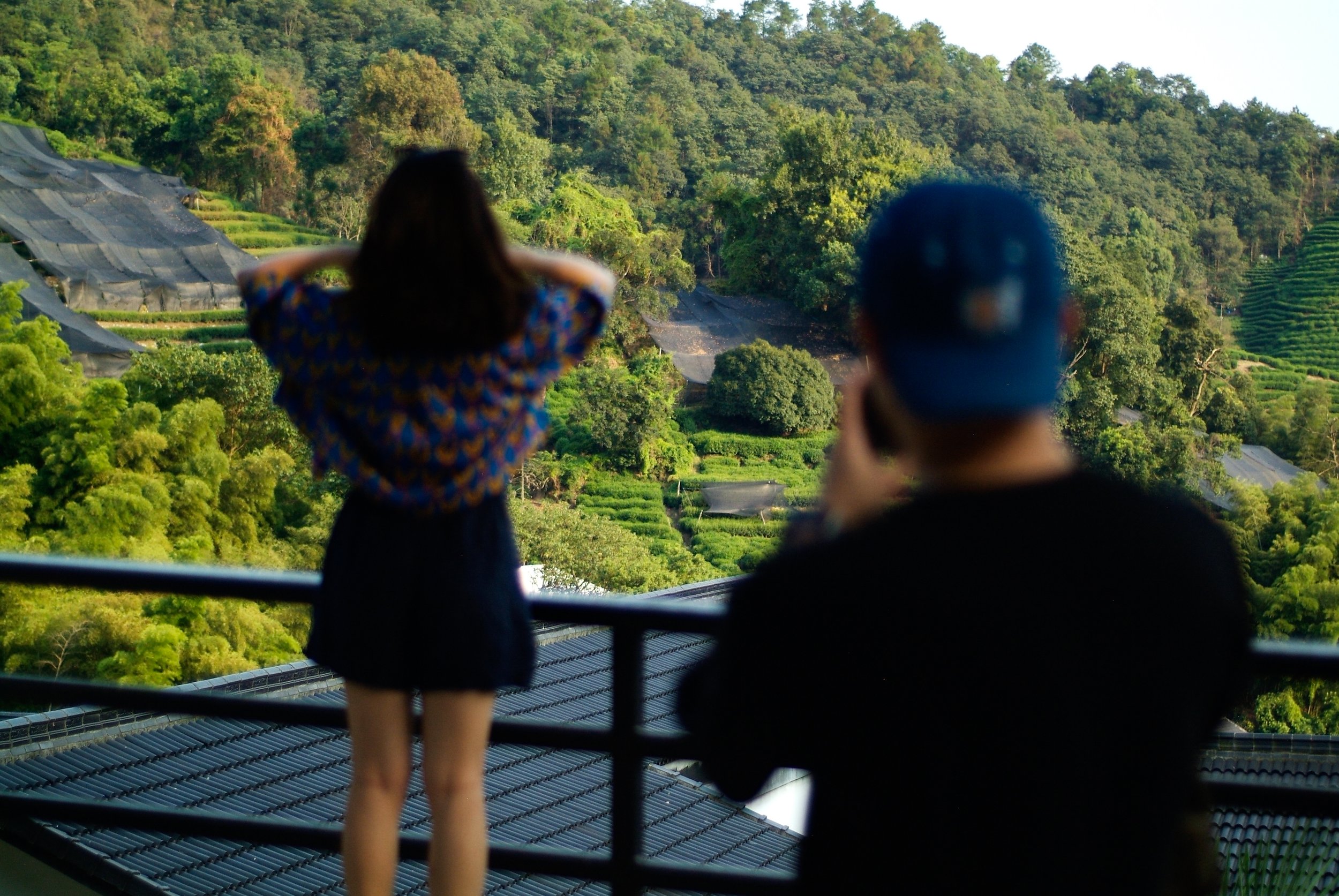
> TRAVEL FILES <
THE SIGN HUNTERS
@thesignhunters • #thesignhunters • #handfulsadventures • #apiginchina
CHINA: Hangzhou Explorations, 6: Yangmeiling village
Written by Laszlo, 31 December 2020
Last time, we introduced you to Hangzhou's best-known and one of China's most famous tea villages, Longjing (龙井), which is situated within the Scenic Zone of West Lake Longjing Tea Culture (西湖龙井茶文化景区) and forms its best-known settlement. But there are other villages around that are also famous or notable for something, if nothing else then they all produce teas - mostly Longjing tea, of course.
One of these villages is Yangmeiling (杨梅岭), which is only separated from Longjing by one small ridge (Yangmei). From the top of this ridge, which is covered with tea plantations of course, is a fantastic view over the two villages. Yangmeiling is named after the Yangmei Valley, where it is located. Owing to its unique geographic location and climate condition, for centuries it has been one of the main producers of a top green tea known as Shifeng Longjing Tea.
A tourist destination specialising in fine teas, Yangmeiling has a beautiful natural setting. Walking the surrounding hills, taking a hike to Longjing village, or walking down towards the Nine Creeks are all relaxing and energising. Jiuxi or the Nine Creeks (九溪), it is a beautiful valley that is zig-zagged by small rivers. The creeks have two sources: one is the Shizi Peak (狮子山) at Longjing, and the other is Wengjiashan (翁家山) which is located north of Yangmeiling village. The waters from nine coves, namely Qingwan, Hongfa, Zhutou, Fangjia, Foshi, Yunqi, Baizhang, Tangjia and Xiaokang converge and run into the Qiantang River southwards, hence the name Nine Creeks. The nine creeks run through woods and around hills, with numerous streams flowing in, so it is called Eighteen Gullies (十八涧).
The famous Xu Yinzhi's tomb is also here in Yangmeiling. Known also by its courtesy name Jihou or Ancao (1875-1924), was a native of Hangzhou, Zhejiang and famous honest and upright official, scholar and businessman in late Qing Dynasty and early Republic of China. He was once consul to Korea, salt transport official of Zhejiang, director of the Beijing-Fengtian (today's Shenyang) Railway, president of Bank of China Zhejiang Branch, director of the Government Monopoly Bureau of Tobacco and Alcohol, and director of Zhejiang Administration for Tobacco and Alcohol. He was a scholarly person free from corruption. He enjoyed a great prestige. He passed away from illness in the 13th year of the Republic of China and was buried on Yangmeiling. During the Cultural Revolution, the tomb was destroyed. In 2008, the tomb and the surrounding are were restored in the integrated renovation project of Nine Creeks and Yangmeiling.
And now, have a look at some of my photos of Yangmeiling. They were taken at different times of the year and by many different devices (thus the differences in quality), such as my loyal Fuji FinePix S3 photo camera involving a few different lenses, my Google Pixel 2XL smartphone, a GoPro Hero 6, and a DJI Mavic Mini drone. I go to Yangmeiling and the area regularly, so you can expect updates if better or nicer photos in my collection pop up.

























































